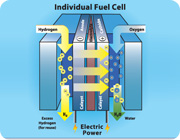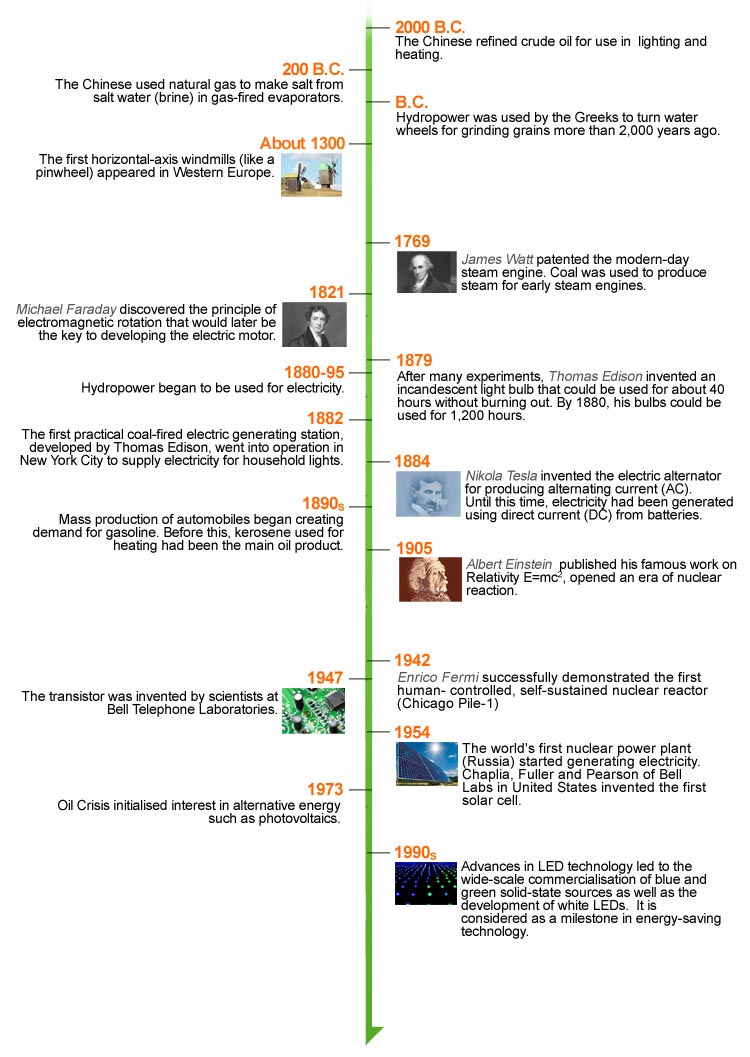ENERGY
History of Energy Use

Economic and technological development is closely associated with use of energy. The tendency has been towards the adoption of energy sources with a higher energy content, as the shift from coal (solid) to oil (liquid) and natural gas (gas) indicates.
Sun and wind are sources of energy known to ancestors from the beginning of history up to the industrial revolution (18th century), use of energy by human relied only on muscular and biomass sources. Most work was provided by manual labour and animals, while the biomass (mainly wood) provided for heating and cooking needs. Other sources of energy, such as windmills and watermills were present but their overall contribution was limited.

By the mid-19th century, the industrial revolution brought a major shift in energy sources with the usage of coal, mainly for steam engines, but increasingly for power plants.
As the 20th century began, the major reliance was still on coal, but there had been increasingly shifted towards higher energy content sources like oil. This second major shift inaugurated the era of the internal combustion engine and of oil-powered ships. As technology matured, mankind was even able to tap on more efficient sources of fossil fuels (e.g. natural gas) and nuclear energy.

It is expected that the 21st century will be characterised by major shifts in energy sources from complex fossil fuels such as coal and oil to simpler fossil fuels like natural gas. Following the advances in technology, more energy sources are under intensive development, for example,
- biotechnologies (e.g. biofuel from algae) anticipate the growing usage of biofuels,
- nuclear energy, particularly if nuclear fusion (like the sun) becomes commercially possible, may also play a significant role,
- hydrogen, mainly for the fuel cells, provide small energy generators and numerous portable devices.


Timeline
